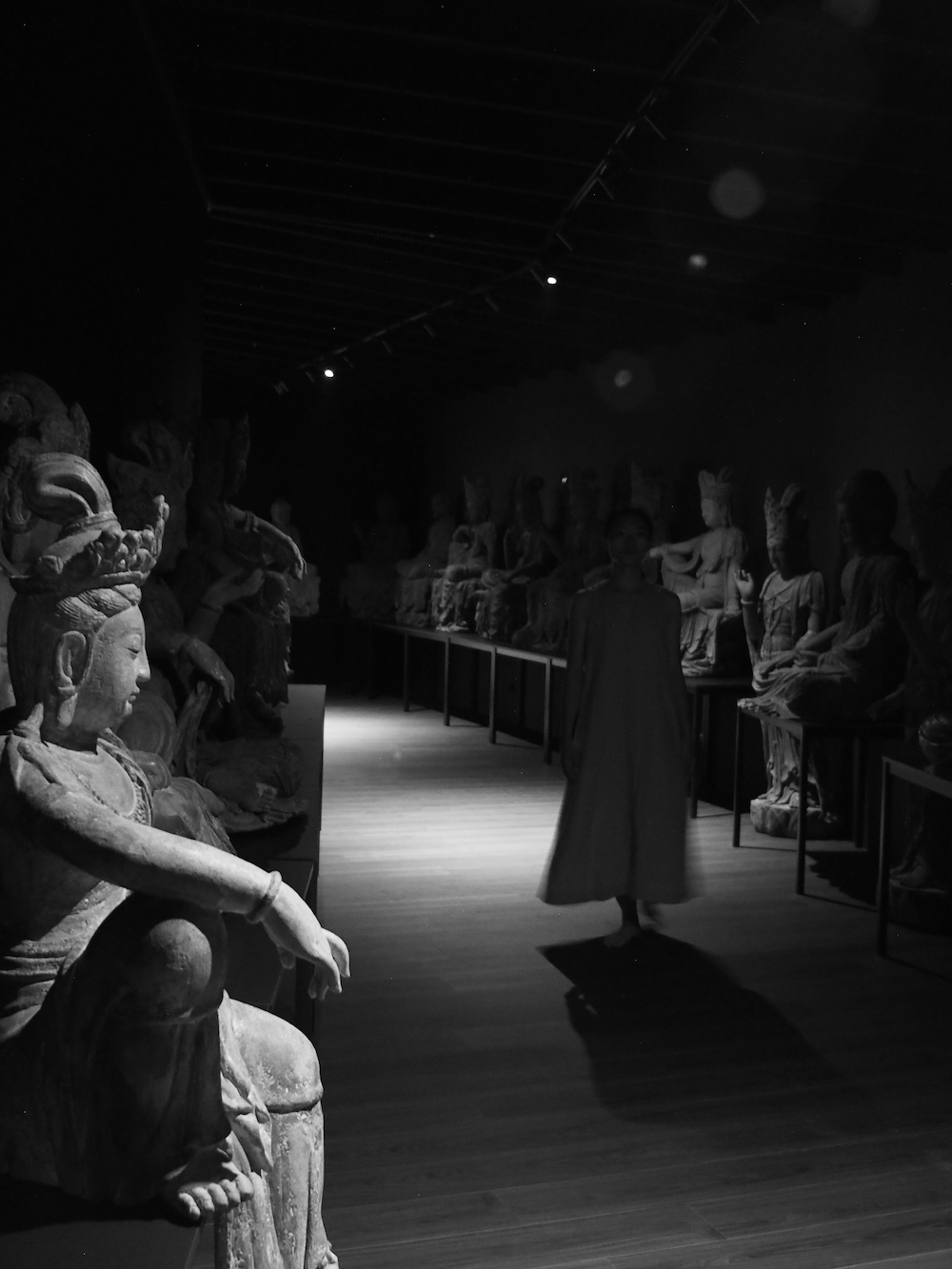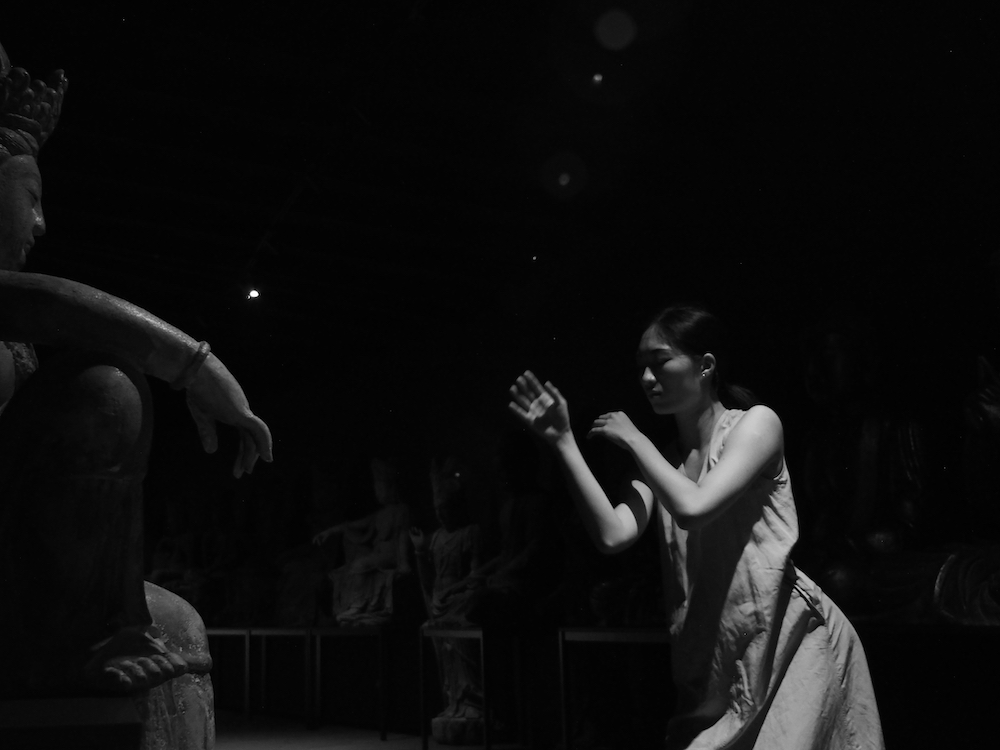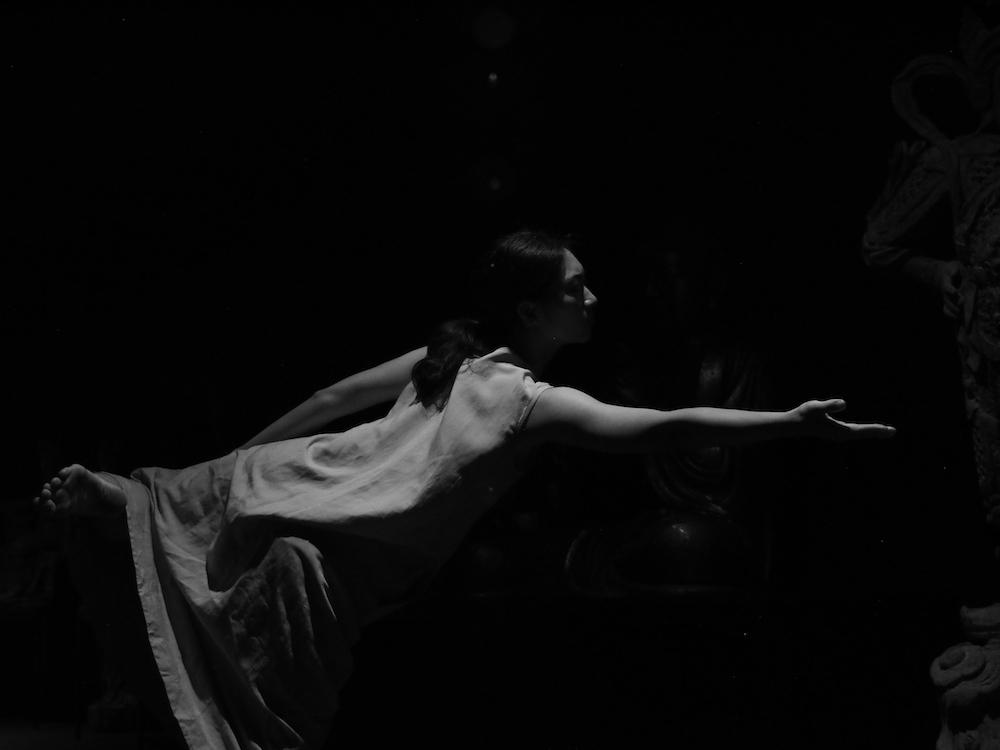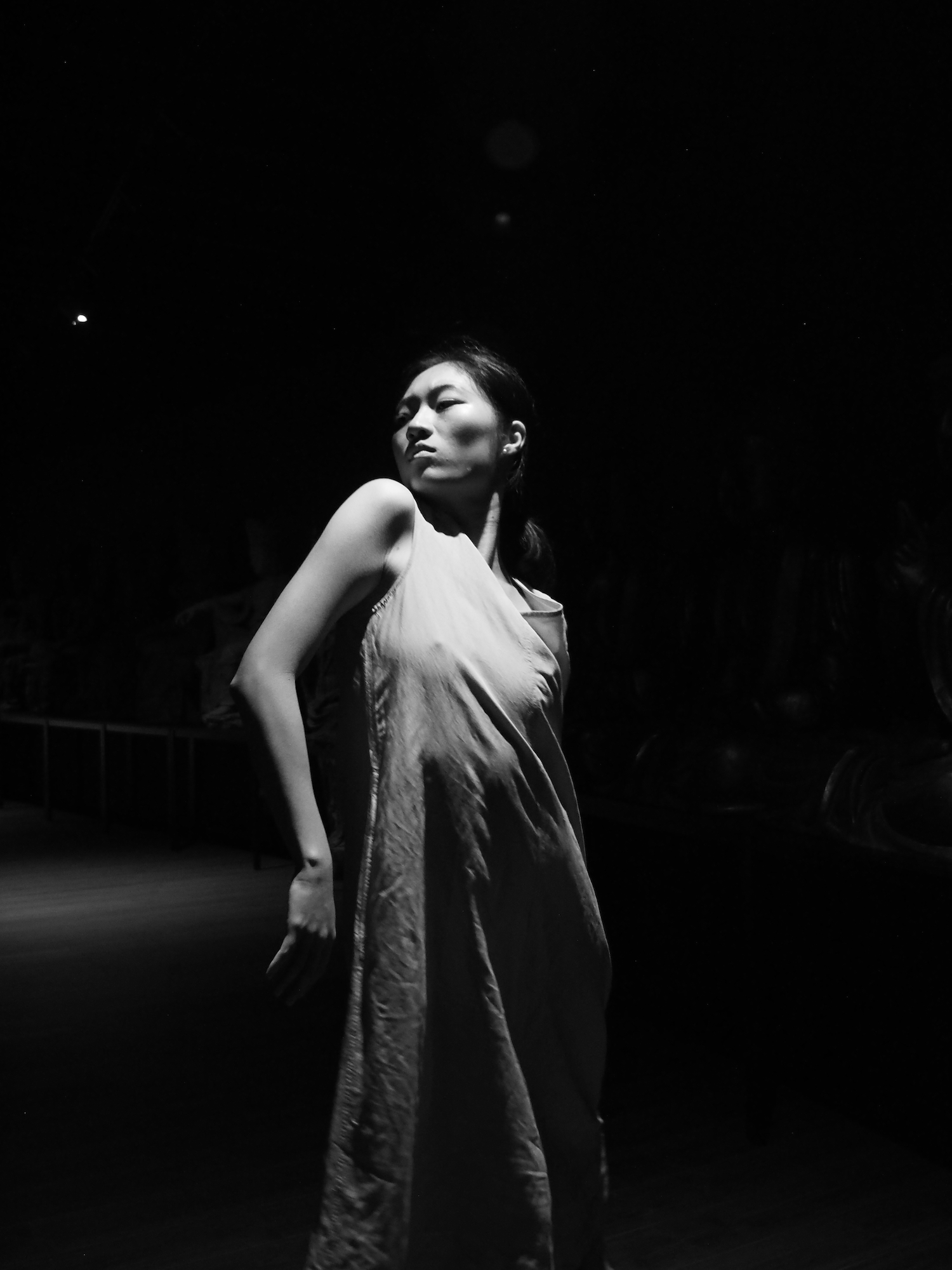No Name
2020 | cooperate project | performer, choreographer
HIGHLIGHT: Cover in 2021-22 Colloque international, Arborer l’archive vivante au musée par le geste artistique : enjeux écologiques. [link] [pdf]
ABSTRACT
With the interweaving of nature and cities in today’s society, they have the flexibility to coexist with rationality and sensibility. Considering the topic of ecological conservation has never stopped, how to redefine the aesthetics of art and further create an organic ecosystem is worth pondering and discussing. If this transforming idea can be applied to revitalize the museum’s navigation and collection presentation, it can not only convey important ecological issues but also interpret the museum’s collections from different perspectives and activate the novelty of art navigation. This research demonstrates the resonance of life and the environment via the human body’s practice and action. And it responds to Floris Neusüss’s work with delicate moving images. It is hoped that the original one-way experience of the museum exhibition can be extended: the audience is not an observer anymore, but the creator as well. We provide a practice for people to experience a series of aesthetics translations and further explore the inseparable connection between artists, works, and nature in the museum.
 |
|---|
| Fig.1: Floris Neusüss, Nudogram Kassel, 1969, Vintage Photogram |
INTRODUCTION
The “NOIR BLANC: A PHOTOGRAPHIC AESTHETIC-Collection of the Bibliothèque nationale de France” is the inspiration and practice field of this research, which was scheduled to exhibit at Grand Palais Museum, Paris, France, in the fall of 2020 (postponed due to Covid-19 until now). We select the “silhouettes”-Floris Neusüss [Fig.1], as the origin and projection of our practice. This work was created in the 1960s. Floris Neusüss used the concept of camera-less photography to project shapes of the human body onto photographic paper. He once said, “It is true that the subject resting on the photo-sensitive paper presents its reverse side to be recorded, the side that is in shadow, the shadow cast by the object itself.” Such a photographic work, not just impressive and makes us breathless, its body impression is like a dancer dancing in nature, wide and free. To find the best place to put our thought into practice, we found a secret house standing right between mountains and nature at Nanzhuang, Miaoli. This place is Prof. Chia-Wei Li’s resort. It encompasses three floors and displays hundreds of thousands of Chinese cultural relics, including Buddha statues, pottery figurines, Vessels, rubbings, calligraphy, etc. Such a historical and beautiful place resonants with the mountains and flowers, echoing the song of birds, rising and falling with winds. The greenery makes cultural relics more organic and helps people mentally and physically relax in this place. Through the collection of all kinds of cultural relics and the echo of nature around the house, this place turned to be a unique transmission of intention. If dancers are dancing in it, it seems to extend the preservation of static cultural relics and turn to be a more ecologically calm state. When we close our eyes and meditate, we could almost see the image created by Floris Neusüss, extending from Paris, France to the place we standing on, Taiwan.
ACTUAL PRACTICE
In this secret resort, the development of creation breaks into three parts: Stone, Wood and Water.
Stone: inscription and nature
The inscription of calligraphy is about 2.8 meters high and 1 meter wide, it is erected by two pieces of glass, one from the front and
one from the back, and the surrounded trees and mountains are lightly visible from the surface [Fig.2-(a)].
At the moment I saw the inscription of calligraphy, the calm and strong feelings fuel my reverence to this piece immediately. Such
solid and firm calligraphy seems to freeze the atmosphere of the entire space. I want to feel the transform between the inscription
of calligraphy and space more. At first, I lay quietly on the wooden floor, close my eyes, and felt the contact between the spine and the floor piece by piece. With one blow, one blow passes through the tail and sacral vertebrae, all the way to the zenith. Then, I turn around and let the right side stick to the ground, placing the weight on the right hip joint, rubbing back and forth, like writing calligraphy, sometimes heavy, sometimes light, sometimes fast, and sometimes slow. At first, I can barely feel the flow of the body, calligraphy, and nature. I felt that there was a thin elastic airbag that isolated me from the outside. But gradually, I breathed in, loosened my waist, stretched my hips, and rounded my knees, inhaling and exhaling. In between, I feel the sunlight passing through the glass and mapping the greenery on my body [Fig.2-(b)(c)]. I seem to hear the sound of the calligraphy. My body, air, inscriptions, and the greenery of the mountains and trees finally echo each other and enjoy the moment with comfort.
 |
|---|
| Fig.2: (a) Inscription of Calligraphy (b) body (c) feet |
Wood: buddha and breath
The Buddha statues all have unique expressions and are displayed in a long and dim aisle. I stand right in the middle [Fig.4].


I may look calm, but my heart beats so fast. When I start to move the body, I move forward step by step slowly. In the meantime, I could see a Buddha looking at me dignifiedly. First, I was goosebumps, and then carefully felt the air received by the soles of my feet, and passed it to my ankles, knees, hips, tail vertebrae, stomach vertebrae, shoulders, and even head. I let the breath guides me, every step is like the conversion with each Buddha statue, looking into their eyes, and touching them gently [Fig.5,6]. Dancing with Buddha is an extremely difficult however relieving experience. In the quiet and calm space, usually, it is hard to find out our own breathing route and flow, and however, it is necessary to always pay attention to the body and breathe deep inside while not losing focus on the outer transformations. I still remember that in the last few steps, I slowly walked backward. The Buddha still stands solid and calm side by side around me. The perseverance is moving and touching, and I close my eyes, settle down my heart and show my full gratitude to these incredible Buddha statues, who are willing to share their presence with me.
  |
|---|
| Fig.5: eye contact and touch |
 |
|---|
| Fig.6: the presence moment |
Water: pottery figurines
The image of the pottery figurines is slim and graceful, the cuffs of their clothes are longer than the arms [Fig.7-(a)]. When the Silk Road was prospering at that time, dancers and waitresses at the relay station played an indispensable role, bringing happiness and relief to businessmen. we transform such graceful and beautiful images into silk scarves [Fig.7-(b)], orange clothing, and the dancing of the human body interacting with natural life. As if we expand the time and space, growing the sprouts into trees, and see the beautiful moving image of those pottery figurines. To express the image of the Hu tribes people’s pottery figurines as much as possible, we chose to incorporate “water” from a poolside perspective, because “water” has been associated with the charm of women since ancient times. The poolside of this house is located outside the hall, where the back is covered with greenery and there are young and old leaves. The color of the poolside is organic brown green. Next to it is an Amitabha, sitting quietly. In our imagination and practice, after sprouts landing and growing, my body moves with the wind, leading the raw seeds in my intention to grow up, until it turns into a tree. However eventually, we watch the leaves falling, in our imagination, everything returns to the dust, and it will start all over again. This whole circulation, under the dancing of the blue silk scarf, is like the water; with the orange dress in the practice, it is like the scene of the Hu people of that time, singing and dancing on the Silk Road [Fig.8].
 |
|---|
| Fig.7: (a) pottery figurines (b) transform with silk scarves |
  |
|---|
| Fig.8: wind, tree and body movement |
ACKNOWLEDGMENTS
This work was supported by Chu-Yin CHEN, phto credit to Chu-Yin CHEN and Daniel CHEN.